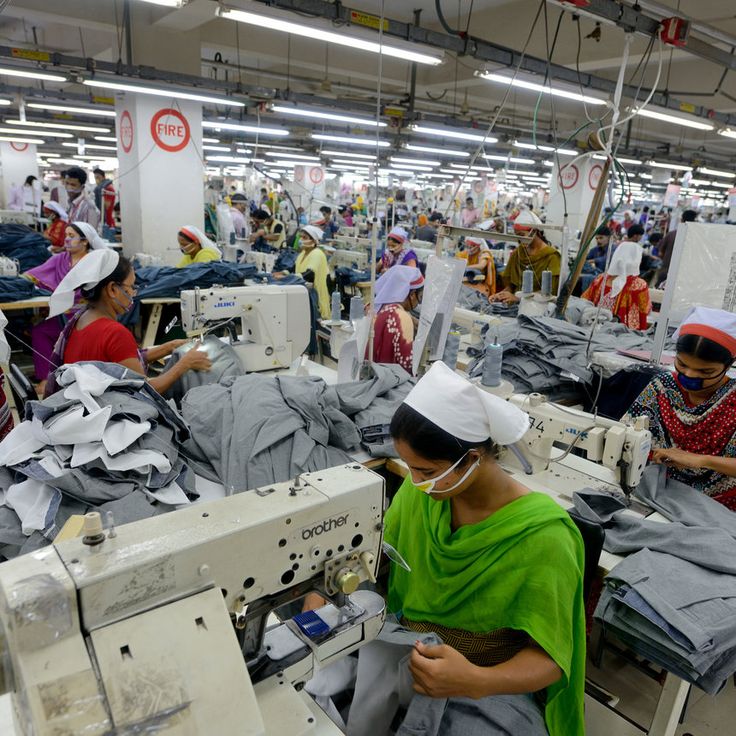As consumers, we often prioritize affordability, convenience, and trendiness when making purchasing decisions.
However, our love for fast fashion, disposable products, and low prices comes with a significant environmental cost.
Consumerism, particularly in the textile industry, has contributed to textile pollution, a growing environmental issue that affects our planet’s ecosystems, human health, and the economy.
Consumerism
Consumerism refers to the culture and ideology that encourages the acquisition and consumption of goods and services in large quantities.
It is a significant driver of economic growth in many countries, but it also has negative environmental impacts.
Textile pollution is one of the consequences of consumerism, as the demand for clothing and textiles continues to increase.
This article will explore how consumerism creates textile pollution by examining the various stages of textile production, consumption, and disposal.
Textile Production
The first stage where consumerism contributes to textile pollution is during the production process.
The fashion industry is known for its fast-paced nature, with new trends constantly emerging and changing.
To keep up with the demand for new clothing items, manufacturers often resort to mass production methods that prioritize efficiency and cost-effectiveness over sustainability.
Overproduction
Consumerism drives manufacturers to produce excessive amounts of clothing to meet market demands.
This leads to overproduction, where more garments are made than can be sold or consumed.
Overproduction results in excess inventory that often ends up being discarded or incinerated, contributing to textile waste and pollution.
Raw material extraction
The production of textiles requires the extraction of raw materials such as cotton, wool, silk, and synthetic fibers like polyester and nylon.
The extraction process involves significant energy consumption, water usage, and chemical inputs.
For example, cotton cultivation is water-intensive and often relies on pesticides and fertilizers that can pollute nearby water sources.
Chemical usage
Textile production involves the use of various chemicals such as dyes, bleaches, and finishing agents.
These chemicals can have harmful effects on the environment if not properly managed.
Improper disposal or discharge of these chemicals into water bodies can lead to water pollution and damage aquatic ecosystems.
Energy consumption
The production of textiles requires a substantial amount of energy, both in terms of electricity for machinery and heating during processing.
The reliance on fossil fuels for energy generation contributes to greenhouse gas emissions and climate change.
Textile Consumption
Consumer behavior plays a significant role in textile pollution.
The desire for new and trendy clothing items, coupled with the influence of advertising and social media, drives consumers to constantly purchase new garments.
This consumption pattern leads to various environmental issues.
Fast fashion
Fast fashion refers to the rapid production and consumption of inexpensive clothing items that mimic current fashion trends.
Fast fashion brands often prioritize low-cost production methods, which may involve lower-quality materials and manufacturing processes that are detrimental to the environment.
The fast fashion model encourages frequent purchasing and disposal of clothing, contributing to textile waste.
Disposable culture
Consumerism promotes a disposable culture where clothing is treated as disposable commodities rather than long-lasting items.
Many consumers buy clothes with the intention of wearing them only a few times before discarding them, leading to a significant accumulation of textile waste.
Impulse buying
Impulse buying is a common behavior among consumers influenced by consumerism.
The constant exposure to advertisements and promotions encourages individuals to make unplanned purchases, resulting in the accumulation of unnecessary clothing items that may eventually be discarded.
Washing and care practices
Consumer behavior related to washing and caring for textiles can also contribute to pollution.
The excessive use of water, energy, and chemicals during laundry processes adds to the overall environmental impact associated with textile consumption.
Textile Disposal
The final stage where consumerism contributes to textile pollution is during disposal.
The high rate of clothing disposal exacerbates the environmental impact of textiles.
Add Your Heading Text Here
A significant portion of discarded textiles ends up in landfills.
Textiles are not biodegradable in a landfill setting and can take hundreds of years to decompose fully.
As they break down over time, they release greenhouse gasses such as methane, contributing to climate change.
Incineration
Some textiles are incinerated as a means of waste management.
Incineration can release harmful pollutants into the air, including greenhouse gasses and toxic substances such as dioxins and furans.
Lack of recycling
Despite efforts to promote textile recycling, the majority of discarded clothing items still do not get recycled.
This is partly due to the complexity of textile recycling processes, as many garments are made from blends of different fibers that are difficult to separate and process efficiently.
‘’Overconsumption is the mother of all environmental problems. For the first time in the history of capitalism, consumption itself has become controversial.’’
– Kalle Lasn





